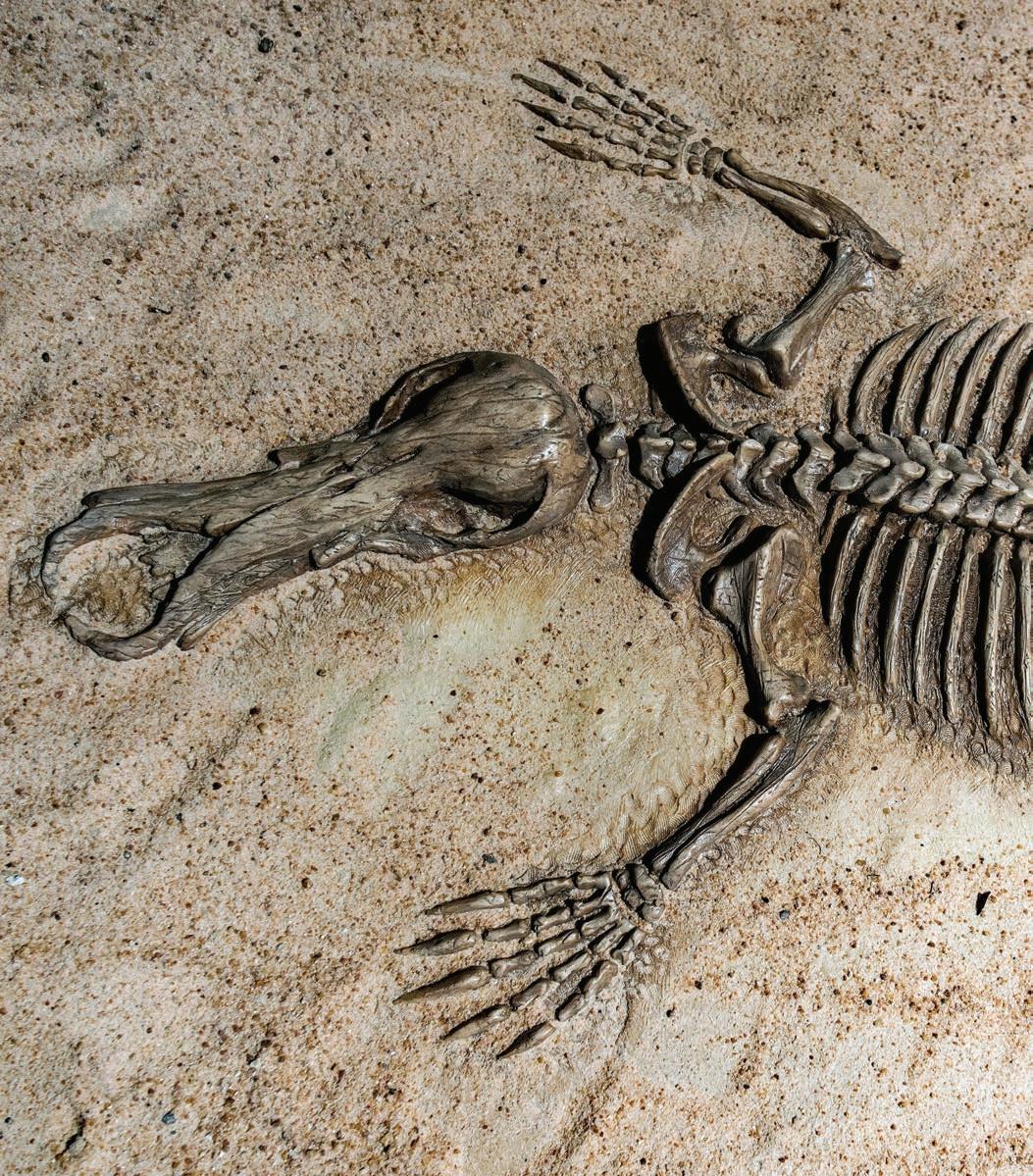
NEWS | SCIENCE | mining | agriculture | charity | TECHNOLOGY P.62 ausbiz. news p.66 Finance Feature P.74 bee parasite breakthrough P.76 ‘maggot robots’ to the rescue P.84 renewables in mining p.88 two new mental health apps p.96 the last word Can looking to the ancient past help us improve conservation strategies for animals and plants in the future? Palaeoconservationists say yes. June/July 2024 80. OLD BONES, NEW IDEAS
Australia builds the world’s first speech-tospeech AI
Australian experts have just unveiled the world’s first speechto-speech AI avatar agent. Designed by Elohim Technology LLC and the University of Technology Sydney (UTS), this machine is programmed to understand and respond to conversations with human-like accuracy and empathy.
The AI is trained to understand a user’s emotional state and contextual cues, adapting its dialogue in order to engage in real-time, multilingual conversation. Elohim has also integrated teachings from the world’s leading spiritual leaders into the AI program, in an attempt to build an ethical framework into the system.
According to a spokesperson from Elohim, “this unveiling is a milestone not just in AI technology but in our journey towards creating a truly ethical AI. Our AI learns from human interactions, continuously evolving to serve better and understand deeper, reflecting our core mission to harmonize technology with spiritual wisdom.”

The team hopes that this machine will bring us closer to empathetic digital communication, and foster a culture of inclusion within the technological community.
Doctor Mukesh Prasad and Ali Braytee from UTS echoed this sentiment, stating “UTS is excited to co-host this event, showcasing a significant technological leap forward that
aligns perfectly with our focus on innovative and ethical technology development.”
Looking forward, Elohim is hoping to introduce this technology into sectors such as healthcare, disability and medicine.
ACT AMBULANCE EMBRACES LIFE-SAVING TECHNOLOGY
The ACT Ambulance service has officially become the first in Australia to provide CellAED technology to their Remote Access Paramedics, empowering them to carry defibrillators into typically inaccessible locations.
CellAED is an ultra-compact defibrillator designed and manufactured in Australia. Weighing 450g, it is small enough for first responders to carry in their first aid kit in the event of an emergency cardiac arrest.
Around 30,000 Aussies experience sudden cardiac arrest every year, and less than 5 per cent survive. Implementing CPR or a defibrillator in the first minute, however, can increase the chance of survival by 70 per cent.
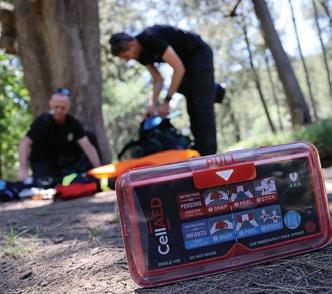
Joel Powell, Canberra Intensive Care Paramedic and Remote Access Paramedic Project Manager, explains the importance of providing paramedics with light, easy-toaccess technology. “It all comes down to weight, we need to reduce what the
paramedics carry around because often their vehicles need to be left behind when traversing remote and dense bushland.
“CellAED is the perfect weight and size, it helps our Remote Access Paramedics to be better equipped for any situation and ensures they have a broad spectrum of fit-for-purpose tools to save lives.”
The ACT State Emergency Service and the Australian Federal Police are also adopting this important technology into their services.
According to Mark Hillebrand, Chief Marketing Officer at CellAED, “this world-first technology is allowing more paramedics to have access to a defibrillator, no matter where they are, potentially saving hundreds of lives.”
AUSBIZ NEWS
66 AusBiz.
Q&A WITH ABBY CRAWFORD FROM AUSTRALIAN POWER EQUIPMENT
Abby Crawford and Andrew Cockbain are the driving forces behind Australian Power Equipment, a leading provider of low-, medium- and high-voltage power solutions. Abby spoke to Emily Riches about their business journey so far.
Can you tell us a bit about your background, and how you came to found Australian Power Equipment?
It’s a bit of a funny story! We started the company during Covid with just one product: the Cambria Association for the Blind (CAB) cable management systems. Both Andrew and myself were working full-time in consulting roles and thought this would give our respective kids a chance to learn new business skills. It turns out we ended up running it as a small side business instead!
It wasn’t long before we took on the agency for B&D transformers and within the year had also added Üntel Kablo cables and Leistung Energie switchgear. The business grew rapidly from there, and now we have both worked full-time in the company for more than two years.
Andrew is an electrical engineer with an extensive background in providing power solutions to mining and infrastructure projects. My background is in business management and development, from multi-national
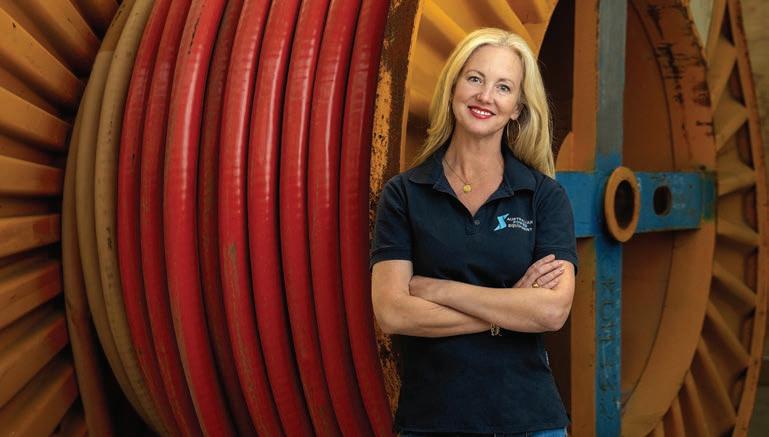
organisations to smaller start-ups – so I have loved the journey of starting and growing Australian Power Equipment.
Can you talk us through some of the equipment you offer and your unique approach to addressing urgent equipment needs?
Safety and reliability is critical in our industries, and we supply the highest quality equipment certified to Australian and IEC standards. We offer all manner of industrial cable, transformers, switchgear and substations. The most important part of our supply chain is building teams based on mutual values, trust and a commitment to quality and delivery. Our critical sourcing services offer immediate solutions to critical issues. New equipment takes time in manufacturing and delivery, and there are many situations where sites simply can’t be shut down. We utilise our in-stock products, refurbished secondhand equipment and connections to provide quick solutions. A recent example was a major mine client that urgently required a critical electric drive; we sourced the part and had it flown into the country within three days.
Why is sustainability so important to your business?
Sustainability is more than a buzzword to us: it is a core value. Our critical sourcing and second-hand division
focuses on a circular-economy model. Our new equipment focuses on sustainable fuels, and net-zero carbon footprint. We also work with our supply chain to assist in creating sustainable pathways.
Our greatest joy is our community and environment initiatives. We are sponsors of Aussie Ark on various wildlife programs, and we are also a Primary Sponsor of Taronga Conservations Society Australia, and we are very excited about the projects they are running.
You recently received an Australian Enterprise Award – congratulations! What’s next for Australian Power Equipment?
Thank you! It was wonderful to be recognised with the award, and we are growing in many directions. We pride ourselves on our customer service, and as a small team we can be very agile in our approach.
We are also focusing on the renewables sector, where we have had some new clients reach out to us with wind and solar projects. We also have clients in the defence forces, transportation, agri-business and construction sectors. Our focus is to continue to service our existing clients and grow further into these sectors to supply superior service and quality solutions.
Visit australianpowerequipment. com.au
INTERVIEW
READ IT ONLINE JUNE/JULY 2024 67
THINKING BIGGER THAN THE ASX: IS IT TIME TO DIVERSIFY INTO INTERNATIONAL SHARES?
words: Henry O’Neil
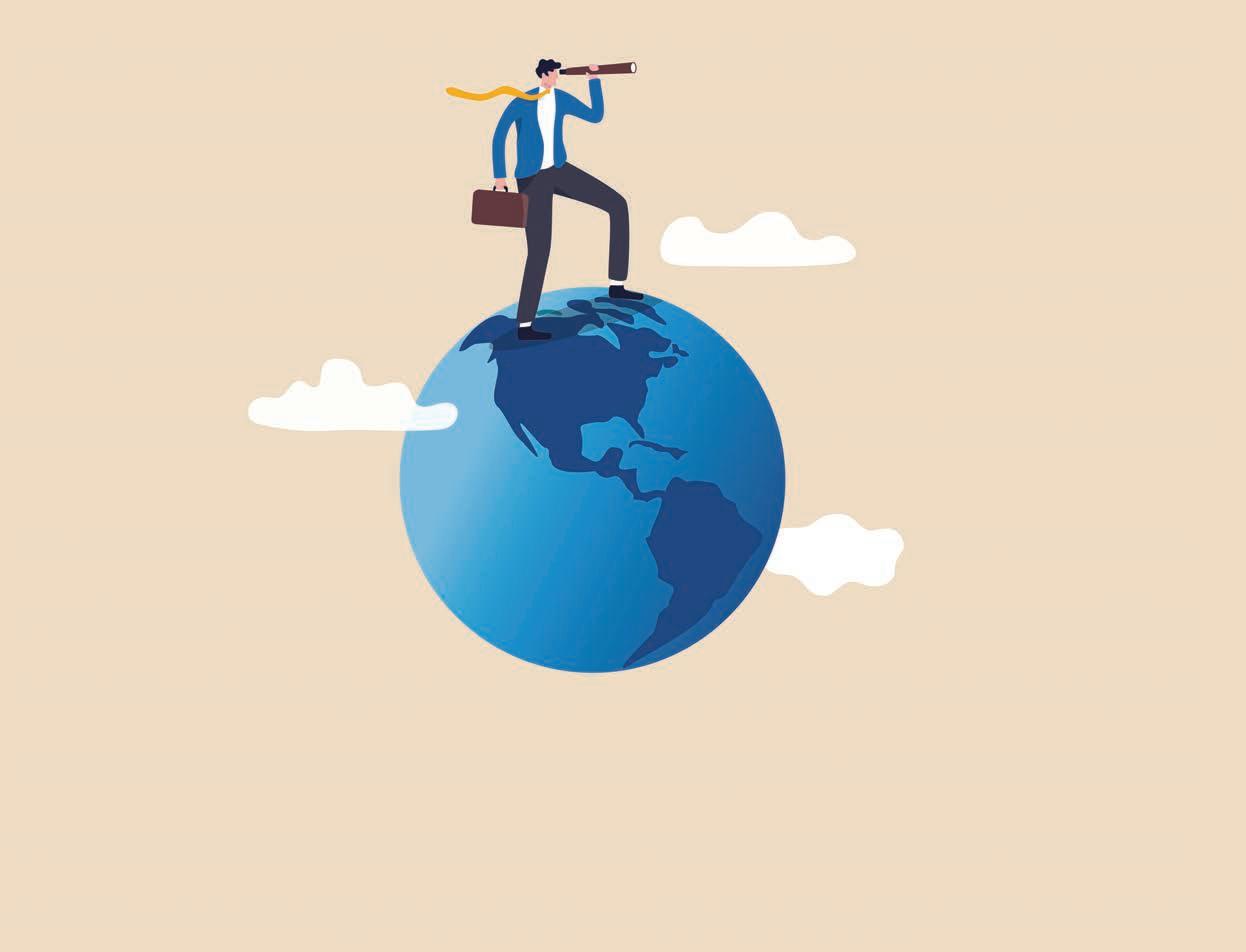
For Aussies, international share diversification is not something we tend to consider. We’re a country of property fanatics with a stable economy and, in the form of the ASX, a developed and dividend-generous share market. What’s not to love about that?
However, investors need to understand that we are a miniscule drop in an ocean of great opportunities – and not assessing these possibilities may be costing you.
WHY LOOK BEYOND THE ASX?
The total value of the global equity market in 2023 was priced at USD 109 trillion (AUD 164 trillion) – and the ASX represents a mere 1.5 per cent of that figure.
For comparison, the United Kingdom sits close to 2.9 per cent, Japan at 5.4 per cent, and the EU at 11.1 per cent. The massive United States stock market (home of the famous NYSE and Nasdaq) is worth 42.5 per cent, or USD 46.3 trillion (AUD 70 trillion).
HISTORICAL RETURNS
The figures don’t lie. Over a 10-year period, Saxo measured the total performance (inclusive of dividends) of the ASX 200 index against other major global indices: While the ASX 200’s attractive dividend yield has pushed its
READ IT ONLINE COUNTRY TOTAL RETURN ANNUALISED RETURN (P.A.) INDEX Australia 139.54 per cent9.2 per cent ASX 200: the 200
Europe 109.85 per cent7.75 per cent Euro Stoxx 50:
Japan 217.96 per cent12.36 per cent Nikkei 225:
225
United States 214.25 per cent 12.23 per cent S&P 500:
500
US
68 AusBiz. FINANCE
largest Aussie public companies.
Europe’s top 50 public companies.
the
largest public companies of Japan.
the
largest
public companies.
annualised return above the Euro Stoxx 50, the Japanese Nikkei 225 and US S&P 500 have achieved far superior returns over this time. While it is challenging to predict future market movements, sticking only to Australian markets could be limiting your potential returns.
Even after accounting for fluctuations in the Australian dollar, an investment that earned you AUD 1 in profit in the Australian market over this 10-year period could have earned you AUD 3.62 in the United States.
DIVERSIFICATION: INVESTING’S ONLY ‘FREE LUNCH’
Separating your investments across different regions and sectors is important for spreading risk. The process known as diversification ties back to the old phrase of “not carrying all your eggs in one basket” – meaning that if you were to “drop” a basket, you won’t lose all your eggs.
An ASX-only portfolio means every penny of your wealth is at risk of shocks and corrections facing the Australian market. Instead, by spreading your capital across different regions, you reduce it –minimising your risks and maximising your long-term return potential.
Despite this, the ASX Investor Study 2023 found that only 16 per cent of Australian investors directly hold international shares – compared to 58 per cent who directly own ASX-listed shares. That means there’s a significant number of Australians
SAXO AUSTRALIA’S TOP FIVE MOST POPULAR* US-LISTED ETFS:
1. Vanguard S&P 500 ETF (VOO)
2. A RK Innovation ETF (ARKK)
3. Invesco QQQ Trust Series 1 ETF (QQQ)
4. SPDR S&P 500 ETF Trust (SPY)
5. A RK Genomic Revolution ETF (ARKG)
* By Saxo Australia clients with open positions. Current as of 10 May 2024.
who are yet to geographically diversify their stock holdings.
So why should investors take this step? Saxo sees seven different reasons:
1. Risk mitigation: By investing in multiple geographic regions, investors can reduce their exposure to the risks inherent in any single market.
2. Economic cycle diversification: While one country may be experiencing a period of economic expansion, another may be in a recession. By diversifying geographically, investors can position themselves to benefit from various stages of the economic cycle.
3. Sector diversification: By spreading investments across different countries, investors can gain exposure to sectors that may not be prevalent in their home market. E.g. the US tech sector or European healthcare sector.
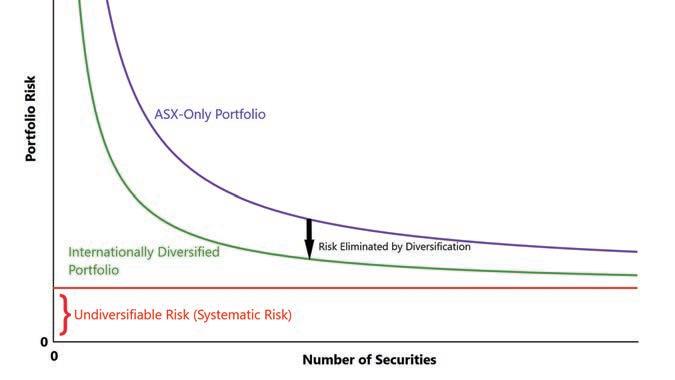
4. Currency diversification: Investing in multiple currencies through geographical diversification can act as a hedge against currency risks.
5. Access to growth opportunities: Emerging markets, such as India, can offer the potential for higher returns due to rapid economic growth and industrialisation.
6. Access to global brands: Geographical diversification enables investors to gain exposure to globally-recognised, reputable brands and companies – whether it’s Apple or Amazon (US), Panasonic or Sony (Japan), or Nestle and Ferrari (Europe).
7. Regulatory and political diversification: Diversification can reduce the impact of adverse regulatory changes or political instability in any single country. Stock picking is a difficult skill to master and can easily become overwhelming. The good news is that it’s never been easier to diversify – the market for Exchange-Traded Funds (ETFs) offers a wide variety of powerful diversification options, from active to passive. Through ETFs, investors can gain exposure to a huge number of companies and sectors around the world. Saxo offers more than 7,000 ETFs for investment through its platform, from as little as USD 1 brokerage.
Geographical diversification is a powerful strategy for investors looking to optimise their portfolios and achieve long-term financial goals. Diversification is commonly dubbed as the “only free lunch in finance” and, to be a successful investor, you must learn its fundamentals.
Disclaimer: Saxo Capital Markets (Australia) Limited (Saxo) provides this information as general information only, without taking into account the circumstances, needs or objectives of any of its clients. Clients should consider the appropriateness of any recommendation or forecast or other information for their individual situation.
JUNE/JULY 2024 69
FINANCE

SHAPE THE FUTURE WITH With world-class automation + positioning technologies that keep your people machines and assets safe. Learn more and get in touch today aptella.com OPERATIONAL TECHNOLOGY

BUMA deploys operational technology for best client outcomes

Mining contractor firm BUMA offers comprehensive end-to-end services for its clients throughout Queensland. With a focus on safety, innovation and technology, the company has rapidly expanded its use of operational technology in recent years, tailored to meet the unique requireents of each client and project. Jack Walter leads the Operational Technology team across all sites. “As a mine contractor, we partner with our clients over the long term and our commitment is to deliver on their evolving shortto mid-term objectives,” he says.
BUMA’s scope and scale of operations is varied and dynamic. Current projects range from integration with a client’s fully autonomous fleet, to operating stand-alone pits, with both waste and production maintenance.
Responsible for monitoring the latest advancements in technology, Walker’s team looks for solutions that optimise performance, asset management and rural network connectivity.
BUMA’s journey into operational technology stemmed from a fundamental focus on taking care of its people, company assets including trucks, excavators and dozers, and the mine itself. “Safety is the number one value at BUMA. We continuously look to integrate industry best practice and utilise technology to create a secure working environment for all staff, both our own and our clients’,” Walker adds.
The use of high precision machine guidance for excavators and dozers, coupled with asset management, machine health monitoring, and site networking solutions, combine to enhance the efficiency and lifespan of machinery. “Optimising the safety of our people, as well as the health and performance of our equipment, ultimately leads to improved pit compliance and extraction. That in turn, translates to higher quality outcomes for clients, both in the short- and long-term,” he says.
As a growing company, BUMA focuses on downstream technologies that materially deliver strategic mine-planning. Survey, machine guidance and drone technology help to ensure accurate and safe mine designs that enhance overall efficiency.
Additionally, BUMA is investing in modern network infrastructure to maintain dataflow and real-time operations. In choosing a technology provider, Walker explains the requirement for a supplier that aligned with BUMA’s agile, tailored approach.
After years of successful deployment at Commodore, near Toowoomba west of Brisbane, Aptella (formerly Position Partners), has supported BUMA’s expansion of technology across all sites, with rapid deployment within a six-month period.
“We value Aptella’s adaptability, aligning perfectly with BUMA’s commitment to client needs,” says
Walker. “Aptella’s agnostic approach provides us with a wide range of solutions across various mining functions, enabling us access to the best tools for each project.
“We value our collaborative working relationship with the BUMA team tremendously,” says Andrew Granger, Mining Business Executive Manager at Aptella. “As a company that lives and breathes its commitments to safety and innovation, it has been a privilege to support their growth.”
As a multi-solution distributor with offices throughout Australia, Southeast Asia and New Zealand, Aptella has a strong commitment to providing local service and support capabilities to customers.
Like BUMA, the company recognises that every site and client has unique requirements when it comes to both the technology and service level agreement that will suit them best.
“Our approach is to listen to customer challenges and understand desired outcomes, first and foremost,” Granger adds. “We then innovate to source and deploy the best, tailored technology to help deliver those outcomes, and support our customers over the long-term.”
For BUMA, Aptella’s service includes 24/7 asset and technology monitoring and support, through Aptella’s remote access platform that enables technicians to view and remotely connect to in-machine systems over the internet. With the ability to train operators, diagnose maintenance requirements and more remotely, the service provides BUMA with fast, proactive support. This is backed by a local team of technicians for any unplanned maintenance that requires on-site attendance.
“In the dynamic industry that is mining, unplanned maintenance is part of the journey,” Walker says. “Having Aptella’s readily-deployable resources make a significant difference and their expert technicians enable us to address any issues quickly, minimising disruption and ensuring smooth operations.”
JUNE/JULY 2024 71 APTELLA
READ
IT ONLINE
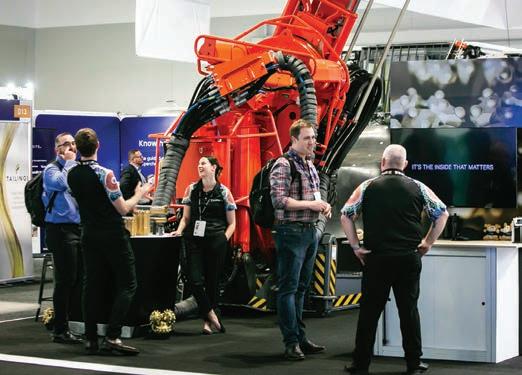

COLLABORATING ON TRENDS IN MINING, INVESTMENT AND INNOVATION TOWARDS A SUSTAINABLE FUTURE
The International Mining and Resources Conference (IMARC) is where the most influential people in the mining industry come together, delivering ideas, inspiration and serving as a meeting ground for the industry. From ground-breaking technology and world-class content to a vivid showcase of all the elements that make the mining industry great, IMARC is an opportunity to learn from more than 600 mining leaders and resource experts with a program covering the entire mining value chain.
REGISTER AND RECEIVE 10% OFF WITH THE DISCOUNT CODE 5F335A REGISTER NOW
imarcglobal.com
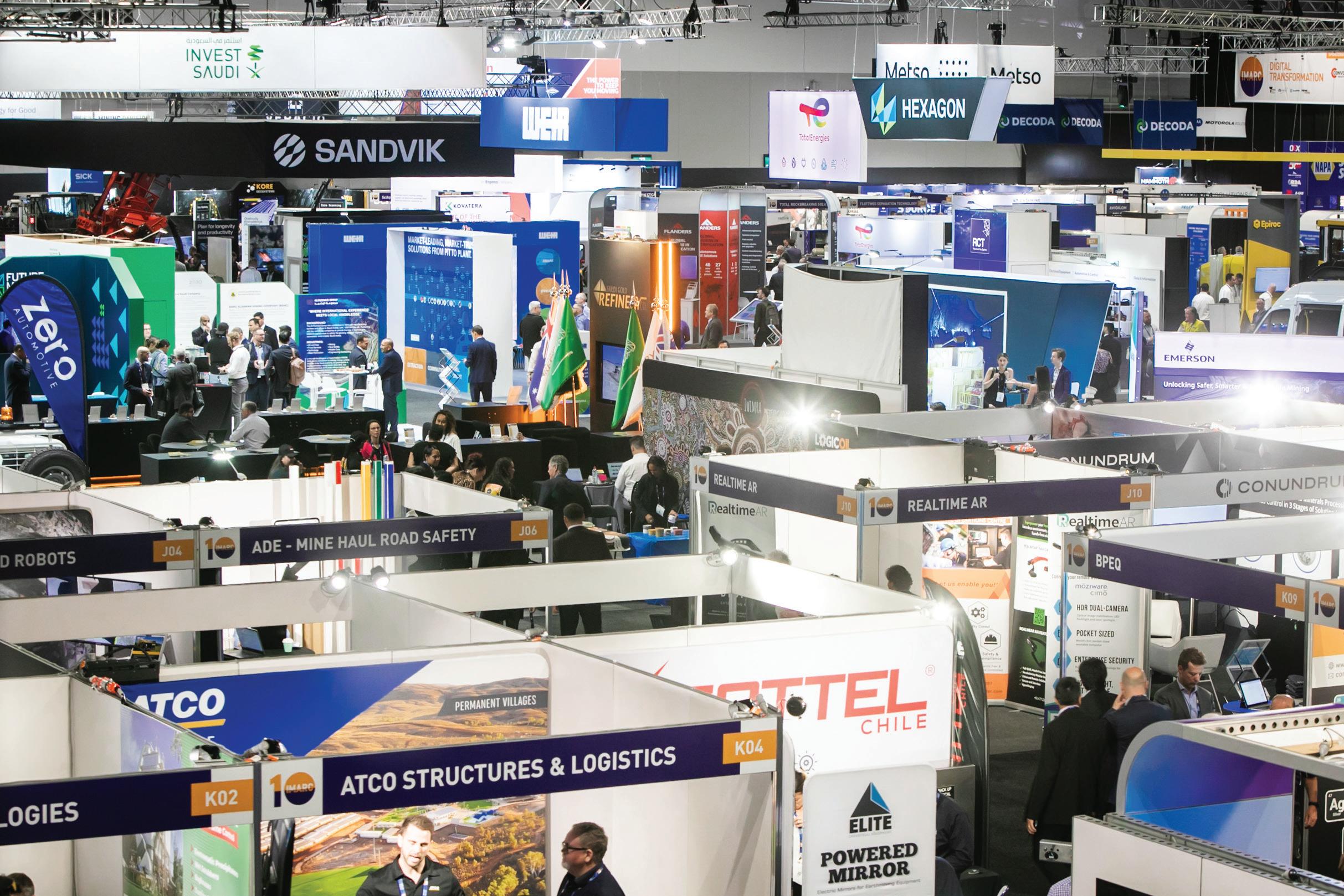
ATTENDEES 9,000+ KEY STATS SPEAKERS 600+
EXHIBITORS 500+
MINING COMPANY ATTENDEES 800+ COUNTRIES 120+
EXHIBITION FLOOR 20,000m2
AUSTRALIA’S LARGEST MINING EVENT




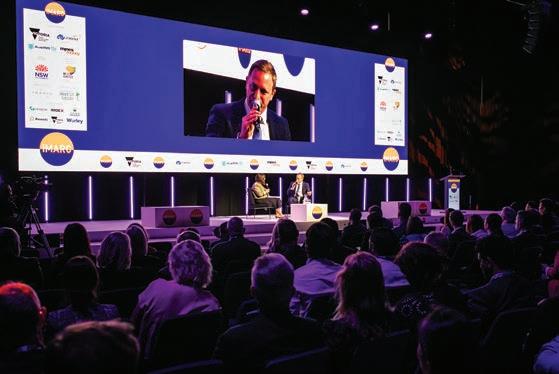

OVER 500 OF THE WORLD'S MOST INFLUENTIAL COMPANIES







BEE GYM TACKLES VARROA MITE
New research has been conducted into a chemical-free alternative to one of beekeeping’s most devastating parasites – the Varroa mite – with promising results.
words: Emily Riches
For almost four decades, Varroa mite has devastated European honeybee colonies around the world, reaching Australia in June 2022. These tiny pests slowly debilitate colonies by feeding on bee’s bodies, while also transmitting harmful viruses that can result in deformed and wingless young bees.
By September 2023, the attempt to eradicate Varroa in Australia had cost the Australian government $100 million, with over 30,000 hives and 1 billion bees lost.
Synthetic chemicals have been used widely in attempts to treat infestations. Although showing short-term effectiveness, the chemicals ultimately leave residue in the wax and honey. Varroa mites have also developed resistance to certain chemicals.
THE BEE GYM BREAKTHROUGH
The Bee Gym and Bee Gym Slim, developed in 2013 by British inventor Stuart Roweth, has long been popular with beekeepers who prefer to manage their hives using fewer chemicals – and recent research by a specialist group in the UK has shown that these devices are effective in allowing the bees to control Varroa mite populations themselves through natural grooming behaviours.
The Bee Gym is made up of a framework of wires which enable bees to scrape varroa mites off their backs,
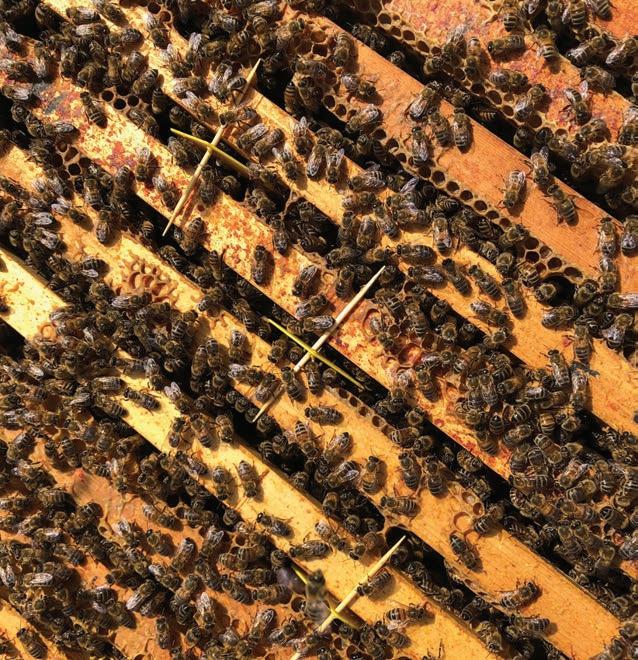

“As its mode of action is mechanical rather than chemical, it is not possible for resistance to develop as it eventually would with chemical control measures.”
together with flippers and scrapers that help the bees to remove mites from their abdomen. Dislodged and damaged mites fall through the wire mesh at the bottom of the hive or onto a plate coated in Vaseline, preventing them from re-entering.
From May to September 2023, the Bee Gym Slim was tested by the
ABOVE AND BELOW: BEE GYM SLIMS; STUART ROWETH. IMAGES: SUPPLIED.
Devon Apicultural Research Group (DARG): an organisation aiming to raise the understanding of bee health through rigorous and robust research.
A hundred and ten beekeepers across southwest England took part in the trial. Beekeepers were supplied with the product and the results measured and recorded every week. Data collected over this 18-week period demonstrated that the hives using the Bee Gym Slim showed a clear increase in the number of mites dislodged from the bees.
This is a huge boost for farmers who want to use the Bee Gym as part of an Integrated Pest Management Strategy to manage Varroa in a chemicalfree way.
“For many beekeepers, chemical treatment is an absolute no-go area,” says Stuart. “The Bee Gym and Bee Gym Slim are biomechanical control devices; they can be used as part of an Integrated Pest Management approach to Varroa control – and this study shows that they make a big difference. Fighting Varroa can be an uphill struggle, so getting bees to help themselves can only be a good thing.”
This article was originally published in The Farmer magazine
READ IT ONLINE 74 AusBiz. AGRICULTURE
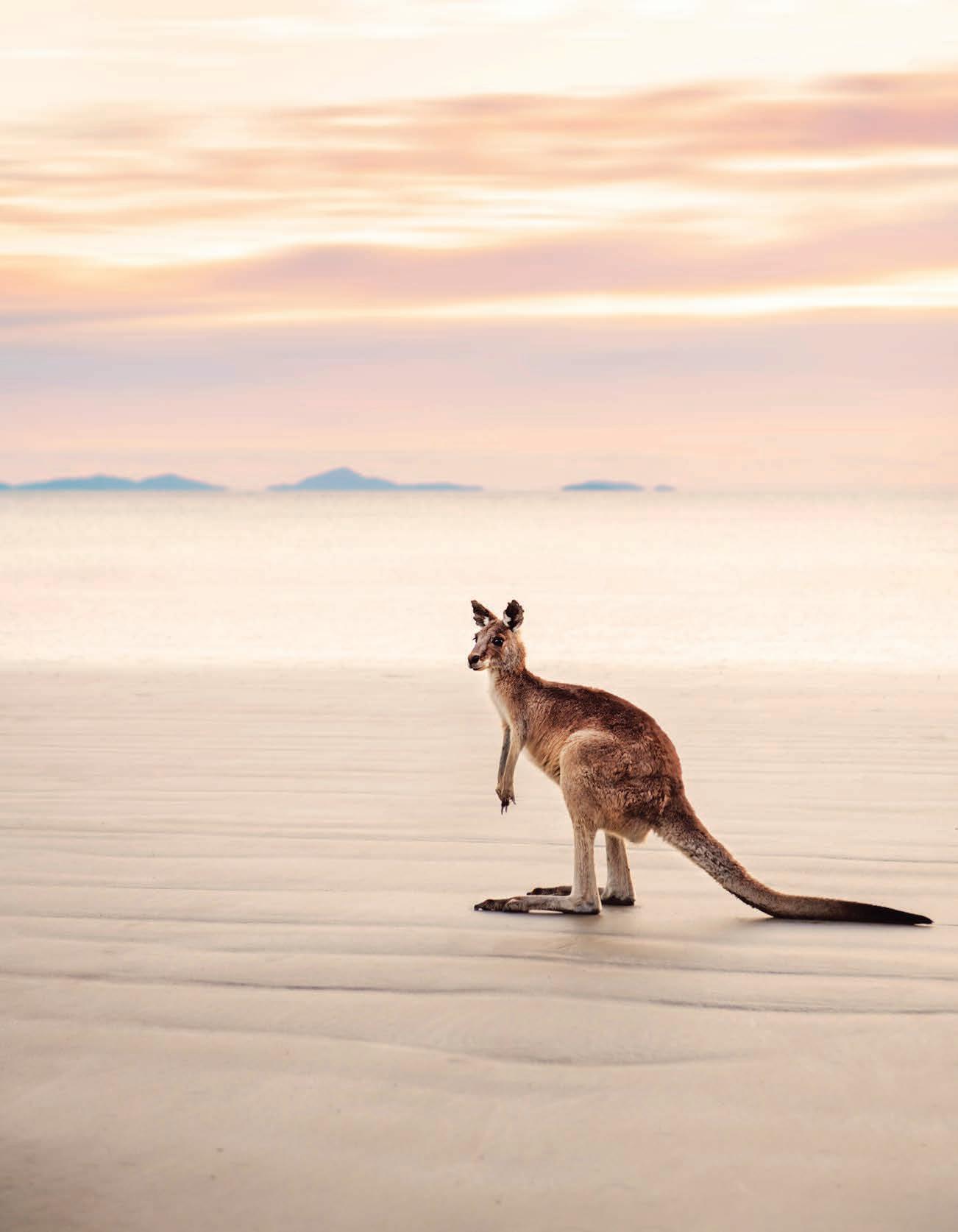
EXPERIENCES
INDIGENOUS
GET OFF THE BEATEN TRACK AND EXPLORE THE REAL AUSTRALIA REX.TRULYAUS.COM An online travel hub dedicated to Australian people, places and products @trulyaus @trulyaus DESTINATIONS
& RESTAURANTS
HOTELS
AUS
DOGS
PODCAST
AUSSIE
TRULYAUS
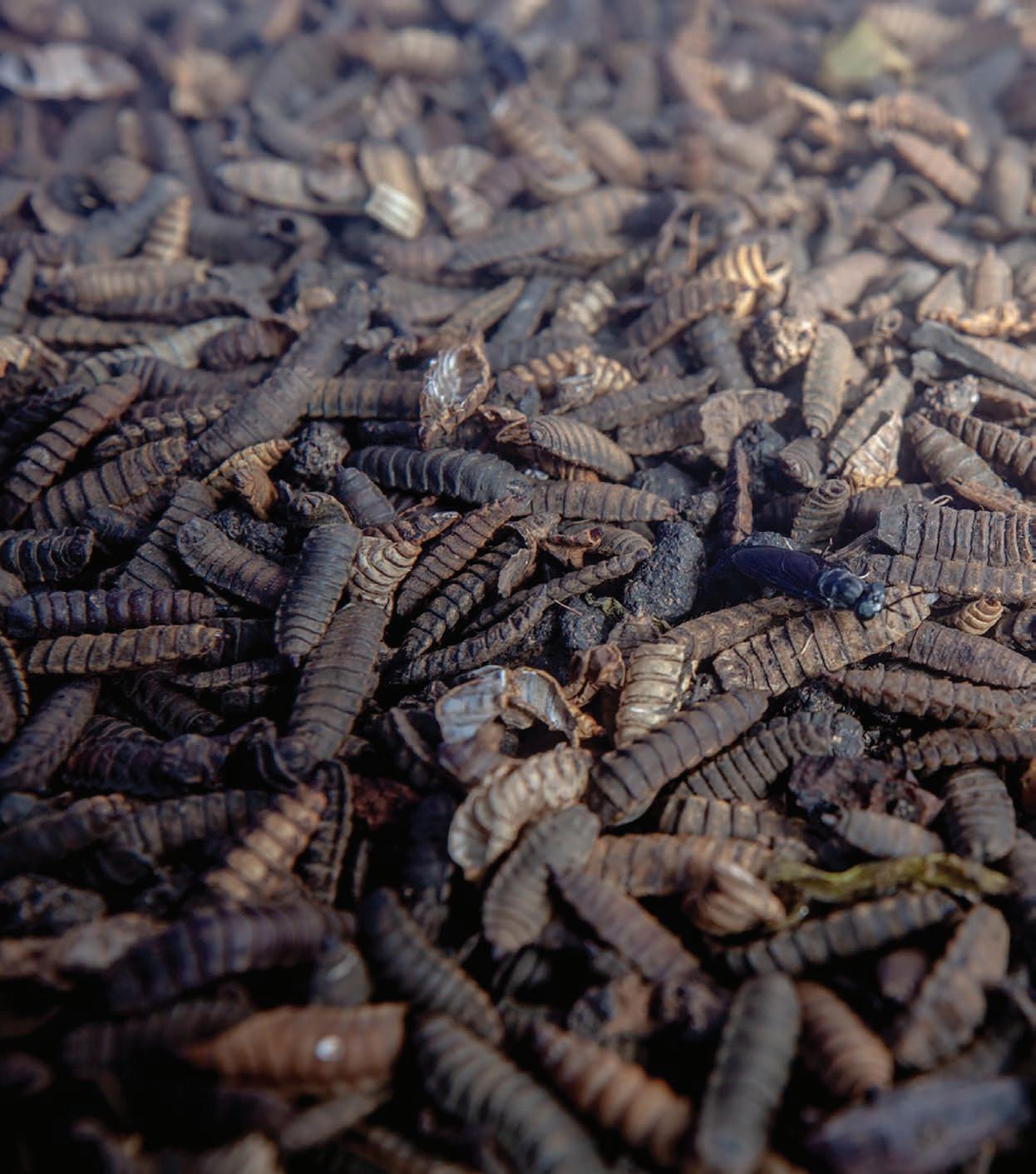
A BUZZWORTHY WAY TO TACKLE FOOD WASTE
In an effort to confront the issue of escalating food waste, one of Australia’s leading supermarkets has forged a partnership with innovative insect farming start-up Goterra.
76 AusBiz.
Words: Muhammad Hassan Aamir
ENVIRONMENT READ IT ONLINE
Images: Frederic Courbet for Panos Pictures/Food and Land Use Coalition
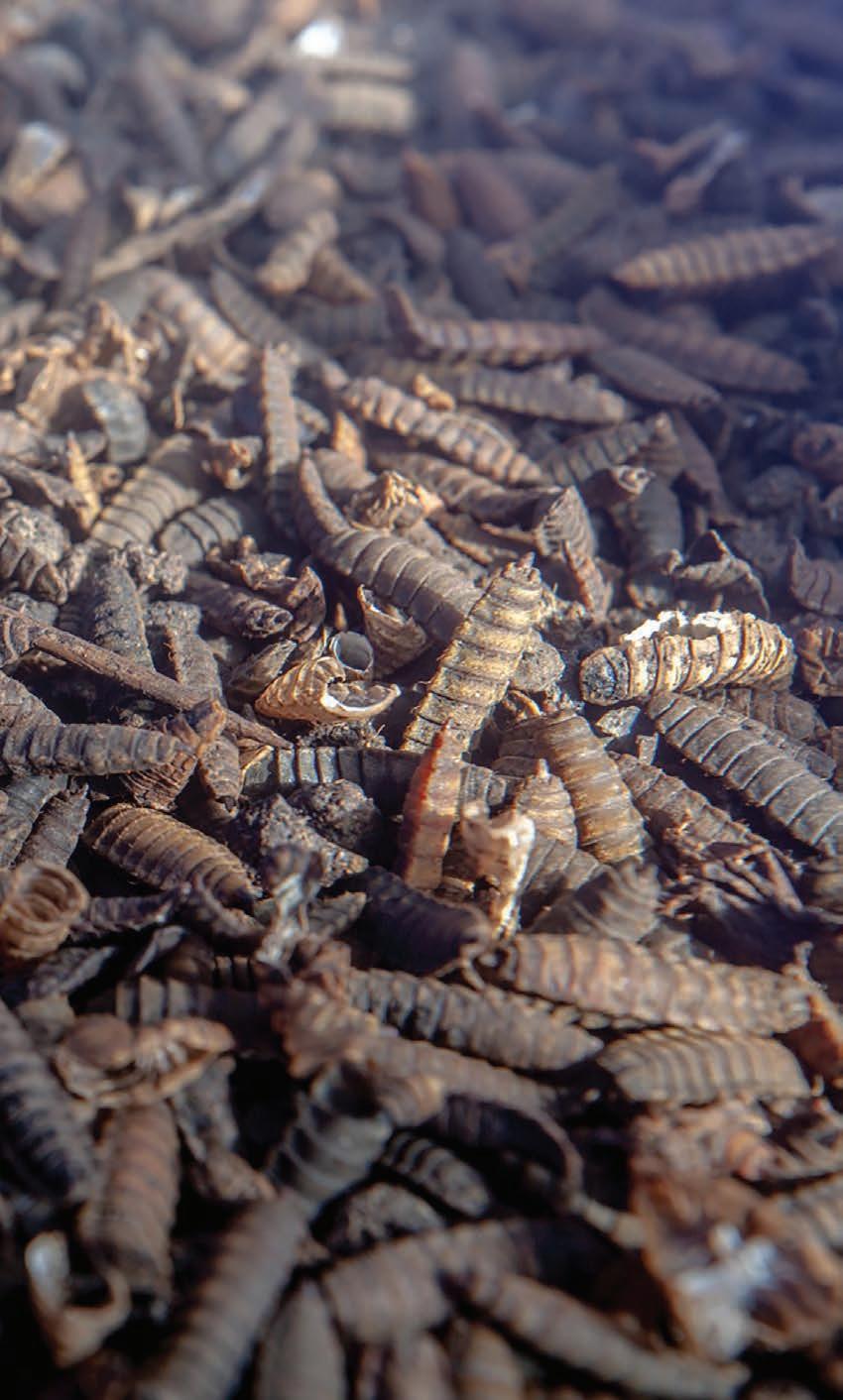
The collaboration between Woolworths and Goterra is set to introduce a groundbreaking food waste management system in Sydney’s Wetherill Park.
INNOVATIVE PARTNERSHIP TACKLES FOOD WASTE
The initiative utilises the larvae of the Black Soldier Fly (BSF) in sophisticated, shipping container-sized modules affectionately dubbed ‘Maggot Robots.’ These units have the astonishing capability to decompose food waste on-site, drastically reducing waste volume by 95 per cent within just 24 hours.
The result? The production of organic fertilizer and a nutrient-dense protein meal, which champions the principles of a circular economy. This aligns with Woolworths’ goal to send zero food waste to landfill by 2025.
THE VISIONARY BEHIND GOTERRA
Olympia Yarger, the visionary behind Goterra and the 2023 ACT Australian of the Year, is a pioneer in insect farming. She founded Goterra in 2014 as an agritech start-up focusing on innovative waste management using maggots.
Since then, Yarger’s ‘Maggot Robot’ system has significantly reduced greenhouse gas emissions by processing over 35,000 tonnes of waste and saving more than 66,000 tonnes of carbon emissions.
“Australia generates over 7.6 million tonnes of food waste annually, enough to fill the Melbourne Cricket Ground nine times, costing the economy over $36.6 billion.”
THIS PAGE: BLACK SOLDIER FLY (HERMETIA ILLUCENS) AVIARY AND MAGGOTS AT GOTERRA FACILITIES IN CANBERRA, AUSTRALIA.
JUNE/JULY 2024 77 ENVIRONMENT

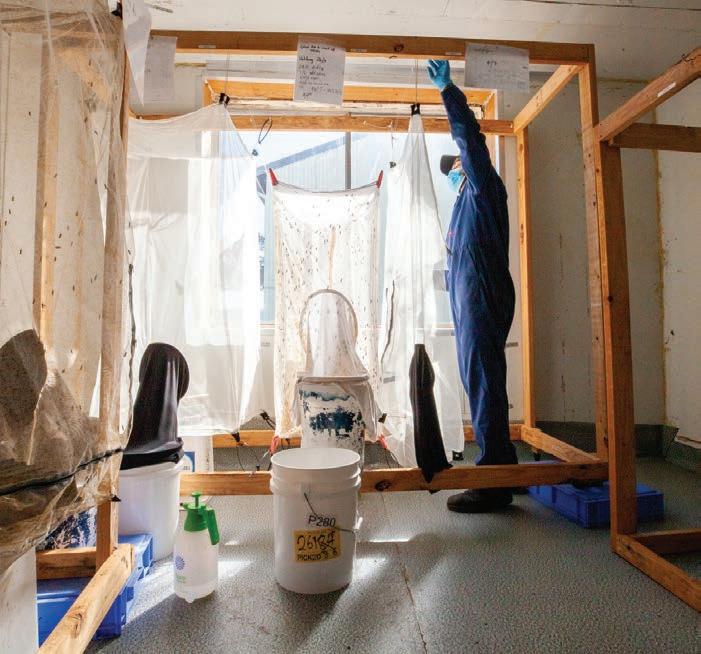
“Our new facility at Wetherill Park has the capacity to recover 6,000 tonnes of food waste annually and turn it into valuable and sustainable products including fertiliser and insect protein, helping to close the loop for key customers including Woolworths.”
Her commitment to sustainability and climate action exemplifies her role as a leader in environmental innovation.
Speaking to Business Australia, Yarger claims that Goterra is not just a tech company that is experiencing success or growth, but is “answering a really big problem”.
THE REALLY BIG PROBLEM
Australia generates over 7.6 million tonnes of food waste annually –enough to fill the Melbourne Cricket Ground a staggering nine times –which costs the economy over $36.6 billion. This waste accounts for around 10 per cent of global greenhouse gas emissions, translating to 17.5 million tonnes of CO2 in Australia.
This represents a significant challenge, with millions of tonnes of food waste ending up in landfill each year, contributing to environmental degradation and economic loss.
The partnership between Woolworths and Goterra, however, showcases an effective model of how technology can be harnessed to address this issue.

78 AusBiz. ENVIRONMENT
THIS PAGE: AUTOMATISED MAGGOT MANAGEMENT SYSTEM AT GOTERRA FACILITIES IN CANBERRA; JESSE WILLEMS, STAFF MEMBER OF GOTERRA, INSTALLS NET FOR BLACK SOLDIERS FLY AT THEIR FACILITIES IN CANBERRA.
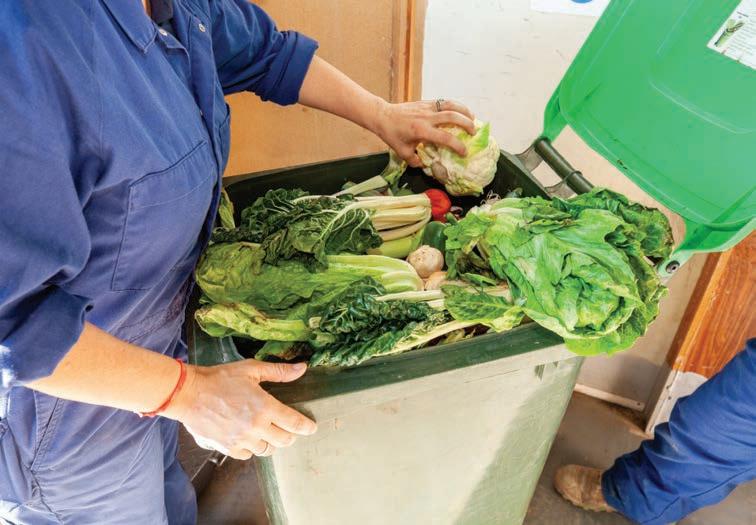
The larvae inside the high-tech Maggot Robots work around the clock, allowing for 24/7 waste processing. Sensors track temperature, moisture and waste levels, automatically adjusting conditions to optimise digestion.
By processing over 100 tonnes of food waste weekly, the Maggot Robots not only aid in waste reduction but also mitigate the environmental impact associated with the transporting waste to distant landfills.
Speaking to Future Alternative, Yarger says, “Our new facility at Wetherill Park has the capacity to recover 6,000 tonnes of food waste annually and turn it into valuable and sustainable products including fertiliser and insect protein, helping to close the loop for key customers including Woolworths.”
A MODEL FOR SUSTAINABLE WASTE MANAGEMENT
Woolworths has been utilising Goterra’s technology in a small-scale trial across its ACT stores since 2020 and is now its foundation customer.
Woolworths 360 Managing Director of Sustainable Impact, Laurie Kozlovic,
CLOCKWISE FROM TOP LEFT: OLYMPIA YARGER AND CHRIS STEVENSON OBSERVE FOOD AND FODDERING WASTE COLLECTED FROM SUPERMARKETS BROUGHT TO GOTERRA FACILITIES IN CANBERRA.

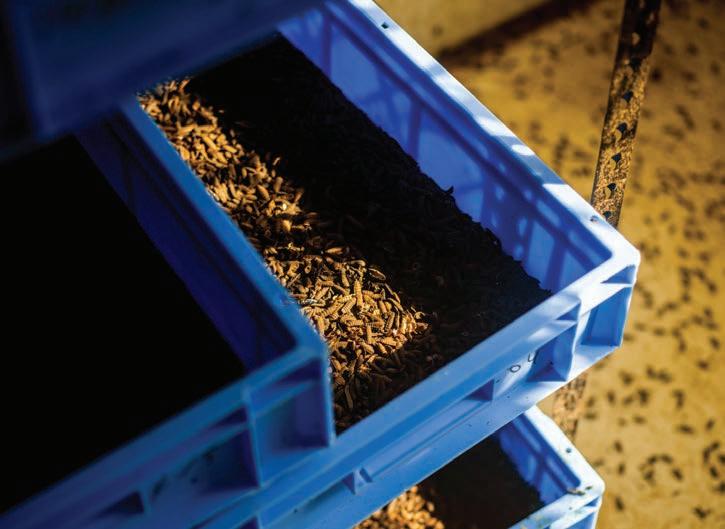
said the system is a key piece of infrastructure that will enable Woolworths’ ambition to divert all food waste from landfill.
“While each of our stores has a partnership with a hunger relief charity, some of our food waste can’t be eaten and Goterra’s unique technology provides a low-emissions pathway to save it from landfill.”
This partnership exemplifies the potential of collaborative efforts between large corporations and innovative start-ups in addressing the environmental challenge of food waste.
By transforming this waste into valuable commodities, initiatives like
this not only help mitigate environmental issues but also stimulate economic growth by introducing new products and job opportunities. The Sydney site in Wetherill Park will create 12 new jobs for locals to Fairfield City Council.
Goterra is also planning to expand its fleet of modular waste units across Australia, providing scalable, decentralised and emissions-reducing waste solutions.
“For too long, food waste has languished in toxic landfills hundreds of kilometres from our cities,” says Yarger. “Our partnership with forwardthinking partners like Woolworths is helping change that.”
JUNE/JULY 2024 79 ENVIRONMENT
HOW PALAEOCONSERVATION CAN SAVE AUSTRALIA’S ENDANGERED SPECIES
Palaeoconservation could be the key to rescuing our endangered animals.
Words: Matilda Meikle
When a species is listed as endangered, experts typically employ practices such as habitat protection, climate control and feeding. In other words, they provide the animal with more of what it already had, and is now lacking.
Palaeoconservation, on the other hand, is based on the idea that these same animals would thrive in a different environment, living under different conditions.
Professor Mike Archer from UNSW’s School of Biological, Earth and Environmental Sciences says that studying the ancient past, including fossils, could improve conservation strategies for the future.
“Many animals and plants have a wider adaptive resilience than their current situations might suggest,” he says.
In palaeoconservation, ancient remains of a species’ ancestor are used to determine future conservation practices for the modern day. And it has had amazing results.
MOUNTAIN PYGMY POSSUM
Burramys parvus, also known as the Mountain Pygmy-possum, is a critically endangered species living in the Snowy Mountains in east Australia.
When studying fossil deposits in the Riversleigh World Heritage Area in Queensland, Professor Archer was
able to link this native species to an ancient ancestor.
“Almost identical ancestors were thriving in cool, temperate lowland rainforests 25 million years ago.
"We believe they moved into the alpine area during a warm, wet period during the Pleistocene (Ice Age), but when the climate changed, they became stranded there, just able to survive by hibernating in winter and avoiding the temperature extremes that characterise the alpine zone.
“And now climate change is threatening them once again, with possibly only 2000 left alive. But using our knowledge of the fossil record, we have proposed that they could be reintroduced into the environments where they were once abundant and thrived for millions of years.”
By collaborating with Mountain Pygmy-possum researchers Dr Hayley Bates and Linda Broome, as well as

Australian Geographic, Australian Ecosystems Foundation and Prague Zoo, Professor Archer was able to establish a breeding facility in a lowland rainforest.
He worked closely with the Secret Creek Sanctuary to raise funds for the construction of a purpose-built facility, and has since been able to introduce a small number of possums to the area to begin breeding.
“This project is already working in just the way we predicted based on our understanding of the fossil record,” Professor Archer says. “The animals are now thriving in the new lowland environmental conditions and have even begun to mate and produce cute little youngsters.”
In the next couple of years, the group is hoping to release the Mountain Pygmy-possums into the wild to monitor how they adapt to the new climate.
SCIENCE
80 AusBiz.
THIS PAGE: THE REMAINS OF A SPECIES' ANCESTOR CAN HELP DEVELOP CONSERVATION PRACTICES FOR THE MODERN DAY.

“Perhaps we could think about the Mountain Pygmy-possum’s fossil record as a proxy for the missing fossil records of other similarly threatened alpine animals and plants.”
SCIENCE
READ IT ONLINE JUNE/JULY 2024 81
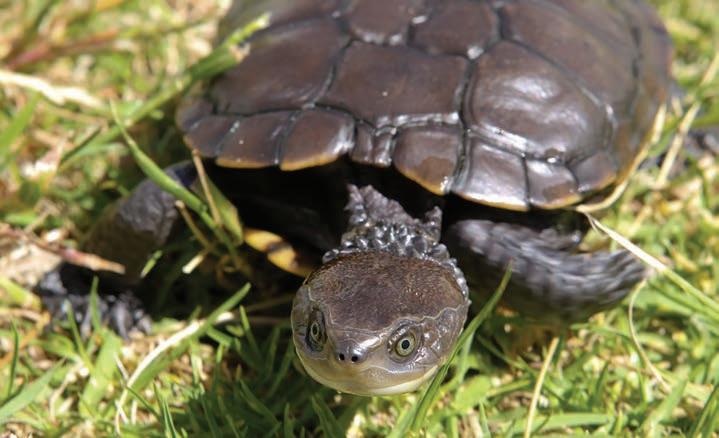
WESTERN AUSTRALIAN SWAMP TORTOISE
Amazingly, this is not the first time palaeoconservation has been used in Australia to support an endangered species.
The Western Australian Swamp Tortoise was believed to be extinct for 100 years before it was rediscovered in 1953. Since then, population size has dwindled to around 50 in the wild, sparking the need for major conservation action.
Last year, in an initiative run by the Western Swamp Tortoise Recovery Team, 200 of these amphibians that had been bred in captivity were released into the wild.
However, instead of returning them to their known habitat, these animals were relocated 80 km north of Perth in Scott National Park and Moore River Nature Reserve.
Studies of fossil records in the Riversleigh World Heritage Area had uncovered a closely related species that historically inhabited a very different environment to the known home of the tortoise.
“The tortoise is critically endangered in part because the swamps where it occurs at the moment are gradually drying up,” says Professor Archer.
“But perhaps there’s a different palaeoconservation informed


strategy that could save this turtle. We have found specimens of the same genus and quite possibly the same species in a 15-million-year-old deposit in the Riversleigh World Heritage Area in Queensland.
This wasn’t a dry desert swamp area at that time; these fossils were found in what would have been a freshwater pond in a cool, temperate lowland rainforest.
“Hence future efforts to conserve this turtle could perhaps seek out similar ponds in the rainforests of eastern Australia, ideally where there are no other turtles with which it might compete.”
COMING FULL CIRCLE
While not all Australian animals can be traced back through fossil history, experts believe that the current collection of fossil remains could still be useful in understanding modern species better.
The critically endangered Southern
Corroboree Frog is one such species. While no fossil ancestors have been identified, the frogs are living and declining in the same region as the Mountain Pygmy-possum, even hibernating at the same time of year.
Professor Archer believes this correlation could help to direct a similar conservation translocation project to save the Southern Corroboree Frog from extinction.
“Perhaps we could think about the Mountain Pygmy-possum’s fossil record as a proxy for the missing fossil records of other similarly threatened alpine animals and plants.
“Given that climate change is now driving it towards extinction in the alpine zone, it would seem sensible to at least consider the conservation value of translocating a population out of the alpine zone and down into the same lowland wet forest environments that kept species of Burramys comfortable for at least the last 25 million years.”
SCIENCE
82 AusBiz.
CLOCKWISE FROM TOP LEFT: WESTERN AUSTRALIAN SWAMP TORTOISE. IMAGE: PERTH ZOO; SOUTHERN CORROBOREE FROG; MOUNTAIN PYGMY POSSUM. IMAGES: ZOOS VICTORIA.
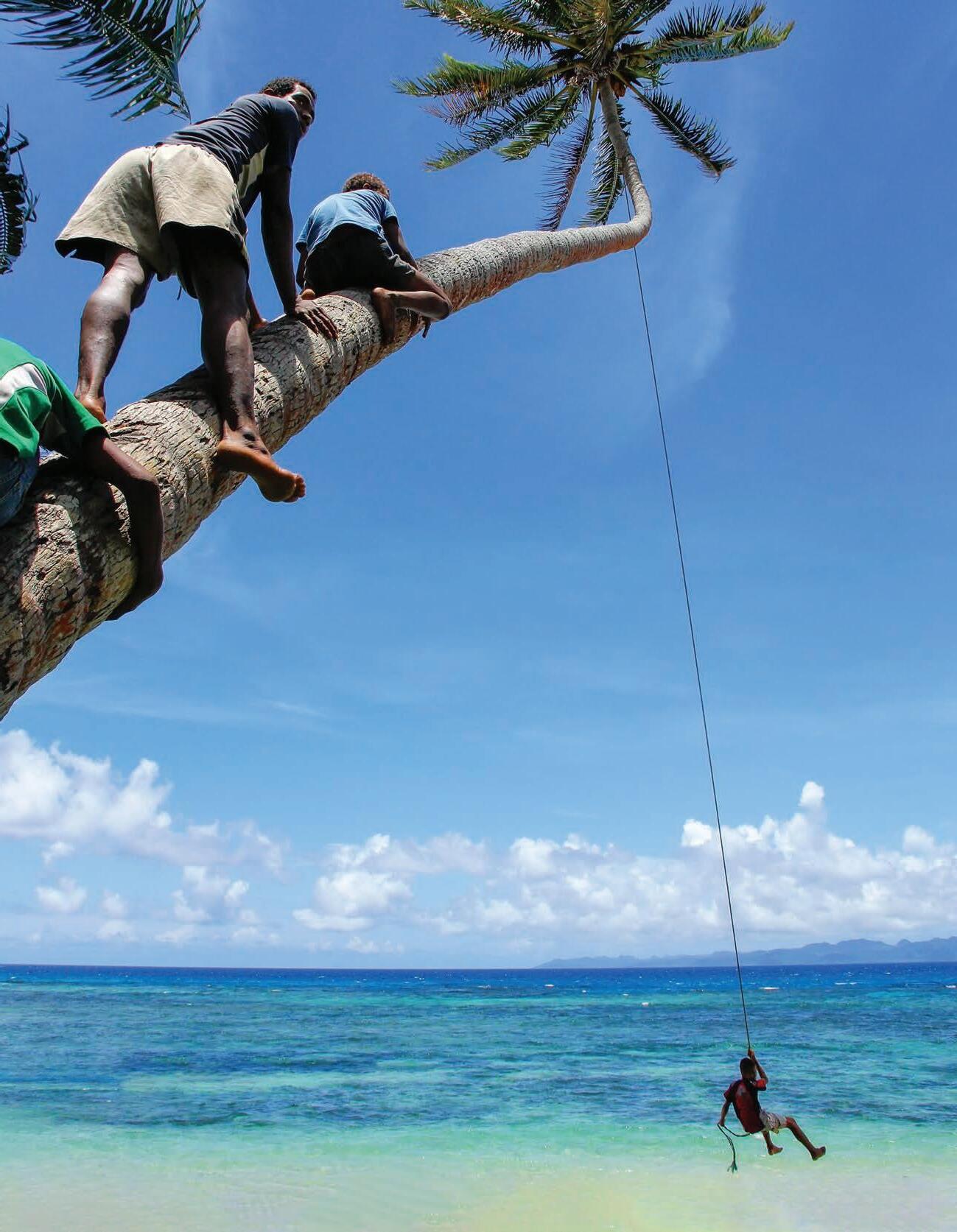
TRULYPACIFIC.COM @trulypacific Dive into the Pacific Islands with us… NEW ZEALAND | FIJI | HAWAII | FRENCH POLYNESIA VANUATU | PAPUA NEW GUINEA | SAMOA A WORLD OF SIMPLE PLEASURES AND WILD WONDERS AWAITS
THIS PAGE: ENERGY STORAGE FOR MINE HOISTS. IMAGE: RUC MINING.
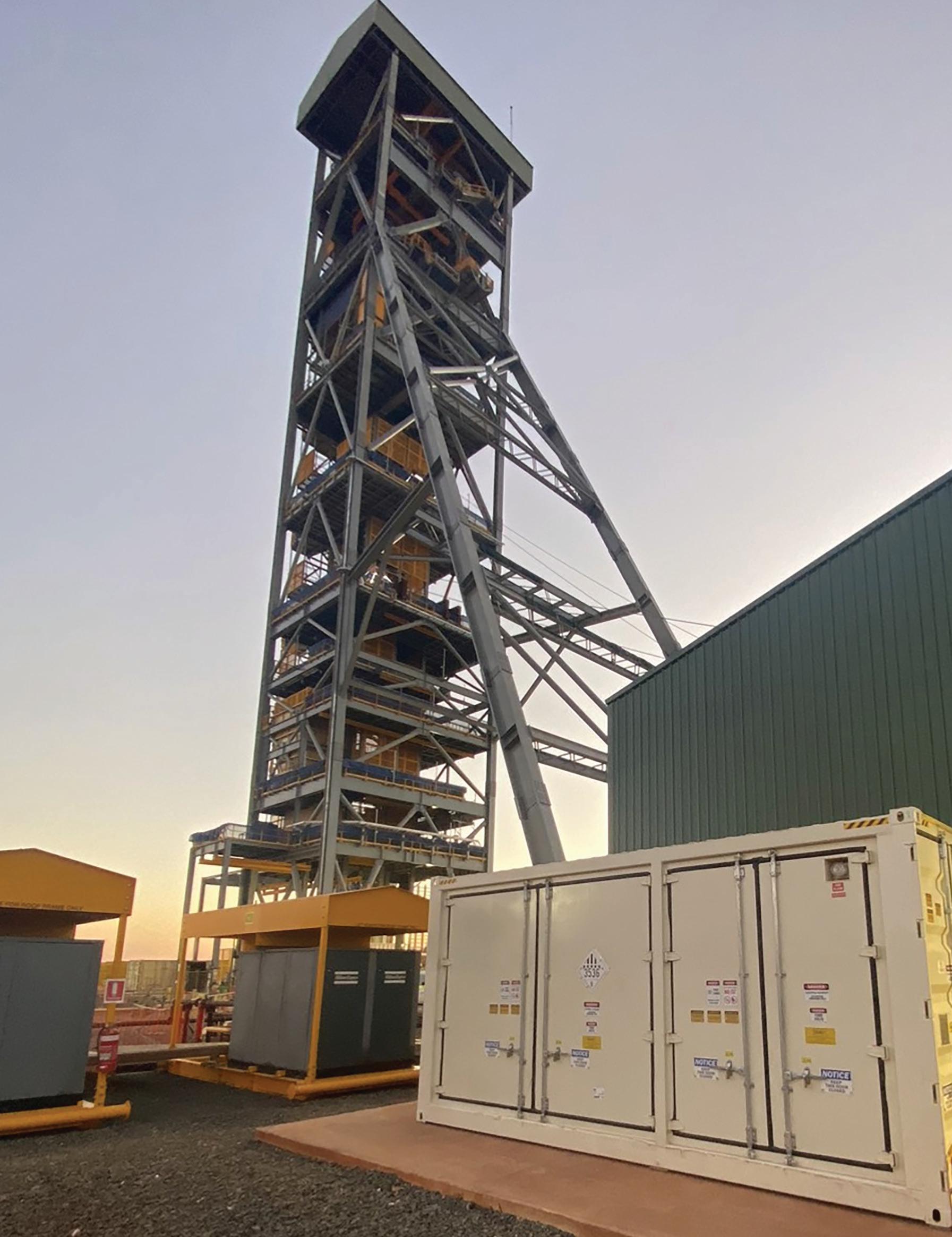
84 AusBiz.

RENEWABLE ENERGY IS TRANSFORMING THE MINING INDUSTRY
With Australia committed to reaching net zero emissions by 2050, innovations that focus on renewable energy sources are becoming increasingly vital. These two renewable energy programs in mining are examples of the path towards a cleaner, brighter future.
words: matilda meikle
GREEN STEEL
Swinburne University of Technology has discovered a new way to process metal using renewable energy, potentially stopping millions of tonnes of carbon dioxide from being released into the atmosphere.
Currently, the production of steel accounts for 11 per cent of global carbon dioxide emissions, according to a report from the Carbon Brief. This contributes to climate change, as well as damaging the atmosphere.
While iron and steel are typically extracted from iron ore using carbon, a team from Swinburne led by Professor Geoff Brooks have been studying the effects of using hydrogen for extraction instead.
“If we can’t decarbonise steel, humanity is in big trouble,”
Professor Brooks told Create Digital. “Businesses will continue to need a vast amount for the foreseeable future, so it’s impossible to overstate the scale of the challenge.”
Australia remains the largest exporter of iron ore in the world, meaning the need for renewable energy alternatives remains a pressing matter.
Professor Brooks, who was recently named as the new Chair for the Sustainable Mineral Processing and Green Steel Program in partnership with CSIRO, hopes to continue working on the production of green metal using hydrogen over the next four years.
“If you want green energy, you must embrace mining,” he explained. “To meet global renewable energy targets by 2040, we’ll need to mine six times more critical metals than we do currently.”
Brooks believes that focusing attention on the critical metals used in solar energy plants and batteries could be a bright solution. However, work needs to be done before this becomes an affordable solution.
“Using hydrogen instead of carbon to process iron ore is currently about 40 per cent more expensive.
“Making it more commercially viable will be complex, but we know it’s scientifically possible.”
Professor Brooks is confident that his team of staff and students is up for the challenge.
JUNE/JULY 2024 85 MINING
READ IT ONLINE
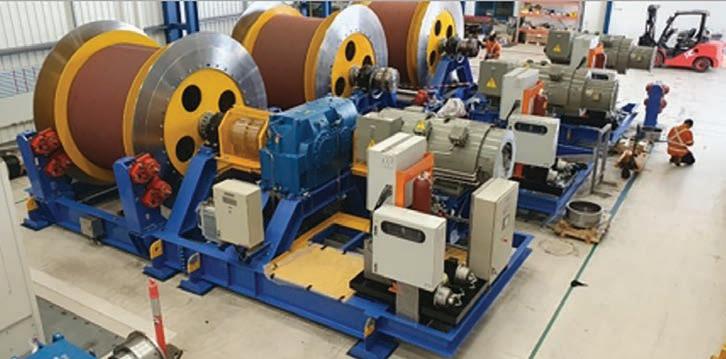
UNDERGROUND MINE HOISTS
As Professor Brooks looks to revolutionise the processing of critical minerals, RUC Mining and Rockwell Automation are concerned with the collection of said minerals.
Underground mining hoists are the machines used to raise and lower minerals through a mine shaft. They provide an efficient and spaceconscious alternative for transporting materials, which would otherwise call for large and expensive machinery. However, while lowering these minerals requires minimal energy, lifting them upwards uses a significant amount of power.
It’s this energy disparity that inspired RUC Mining to consider whether it would be possible to generate energy on the way down, and store it to use as power for the mining hoist on the way back up.
RUC electrical manager, Greg Bell, partnered with Rockwell Automation and Energy Power Systems Australia to design the world’s first regenerative energy storage solution for underground mine winders. Their first installation had a hoist capacity of five metres per second, and operated to a depth of 1,600 metres.
When explaining how the system worked, Bell was enthusiastic about the implications of the program
“Most mine hoists use a brake resistor pack with a cooling fan to deal
“By reducing the amount of diesel needed to power the mining hoists, RUC was able to achieve significant environmental benefits.”

THIS
PAGE: FIRST ELECTRICAL WINDER. IMAGE: RUC MINING; PROFESSOR BROOKS WITH A MACHINE DESIGNED TO STUDY THE SMELTING OF METALS. IMAGE: CREATE DIGITAL
with the heat generated. But these packs create a single point of failure, and are application-specific, so they need recalculation if a variation in brake power is required,” he said.
“Instead, we proposed for the generating power to be supplied back onto the incoming supply bus, to be absorbed by system loads.”
By reducing the amount of diesel needed to power the mining hoists, RUC was able to achieve significant environmental benefits.
This included, as determined through estimates of the first installation over a 24 month period, a drop in diesel consumption by 1,427 kilolitres, equivalent to around $2 million. It also resulted in a reduction of carbon emissions by 3.85 tonnes, the same as driving 12,700 km in a petrol car, and a 42 per cent
reduction in greenhouse gas emissions.
“In addition to these strong sustainability benefits, the regenerative energy storage solution also reduces daily operating costs, reduces plant operating hours and maintenance requirements, and provides an additional level of redundancy to the power system that was not available in passive components such as load banks,” said Bell.
“Because power goes straight back to the battery with no heat loss, this type of solution could readily be scaled down to any energy application – even something like elevators. We believe this is the only successful gravity kinetic energy storage system using a hoist in the world, and we are proud to be introducing it here in Australia.”
86 AusBiz. MINING
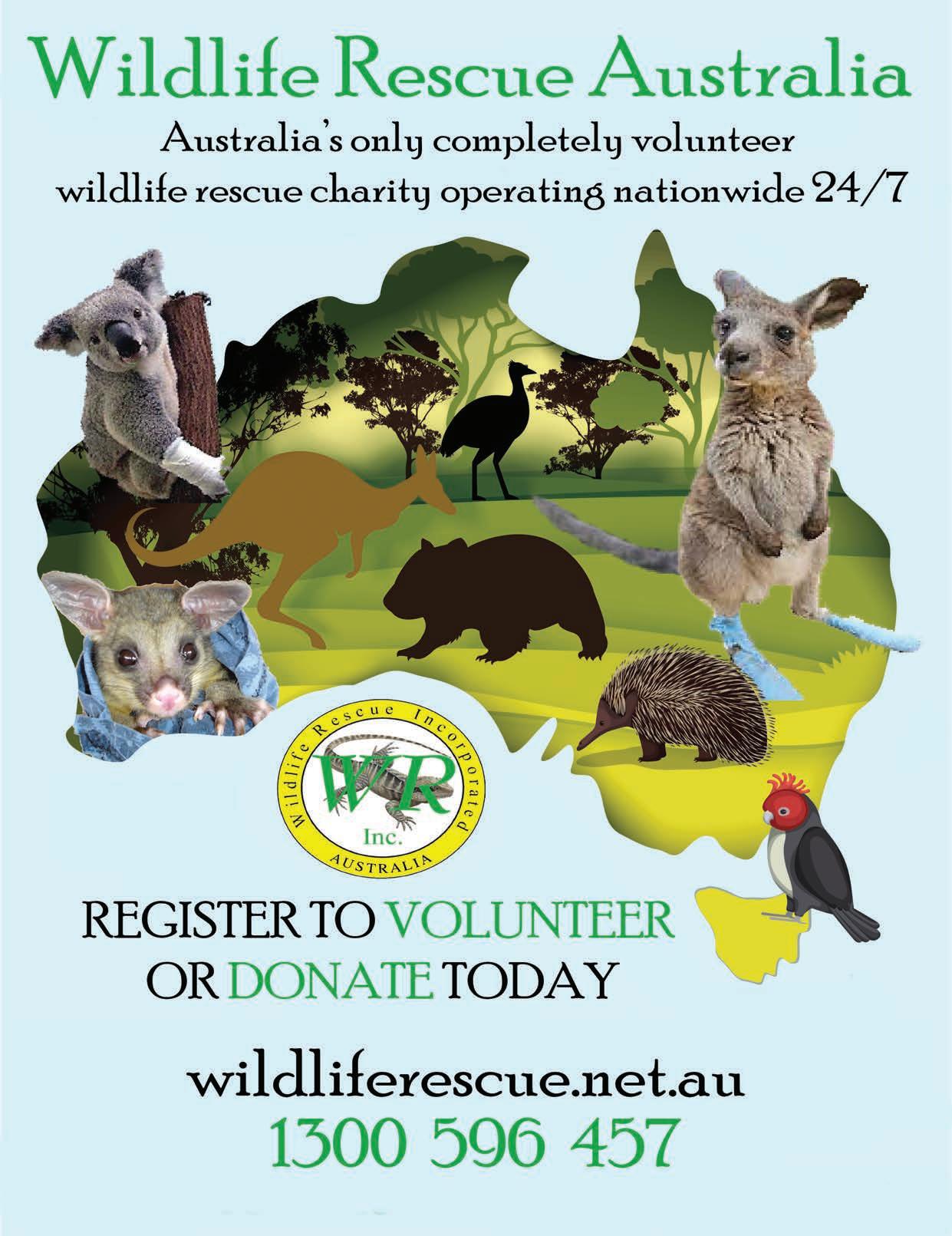
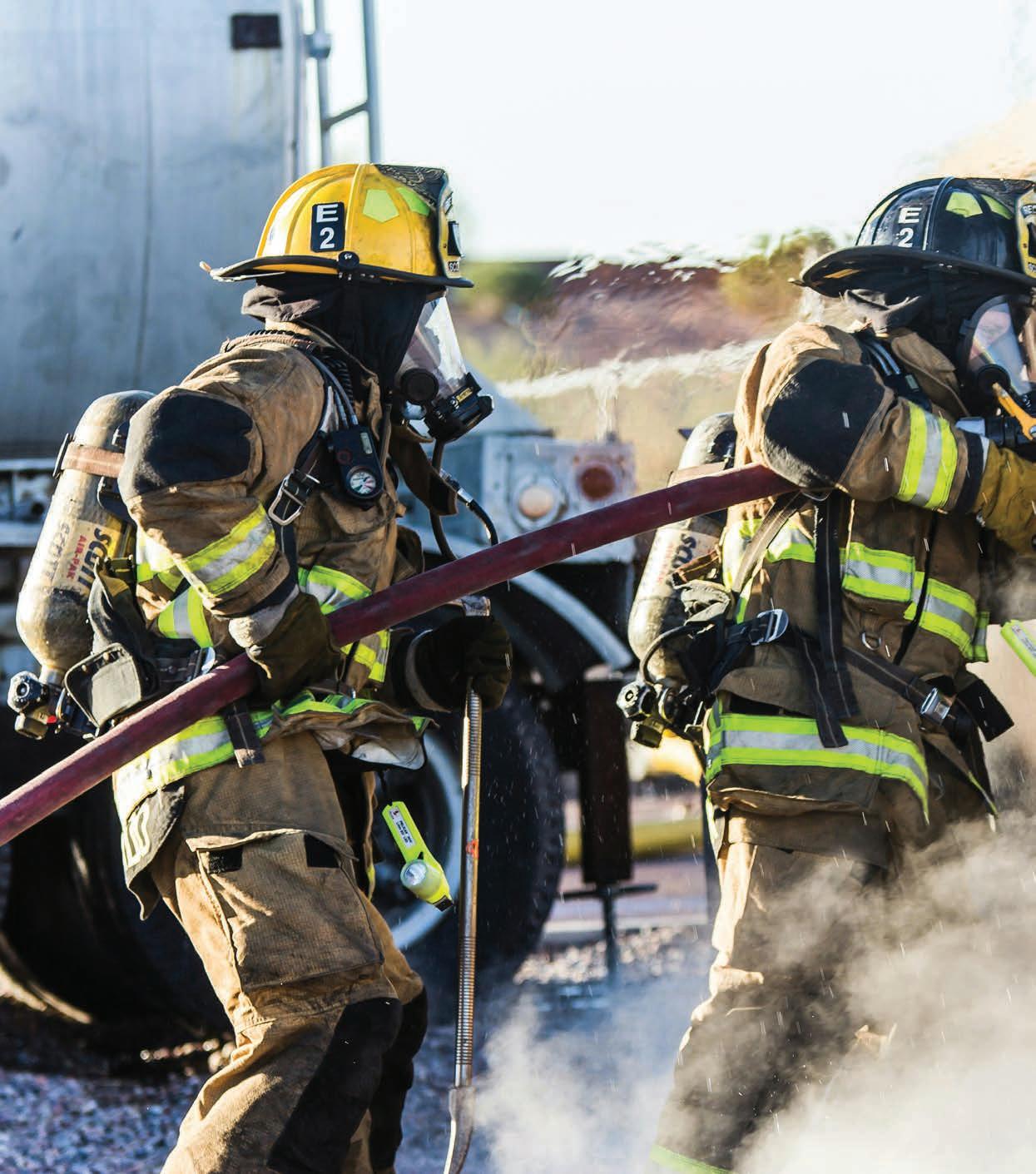
TECHNOLOGY
THIS
88 AusBiz.
TWO MENTAL HEALTH APPS THAT SHOULD BE ON YOUR RADAR
PAGE: THE EMT APP IS DESIGNED TO PROTECT THE MENTAL HEALTH OF FIRST RESPONDERS.

Supporting
good mental health and wellbeing is an important goal no matter your circumstances or situation. These mental health apps are a couple of examples of the programs and initiatives using technology to reach out and offer a helping hand.
Words: Matilda Meikle
EMERGENCY MINDSET TOOLS
The Emergency Mindset Tools (EMT) app is designed to protect the mental health of first responders using natural therapies. In particular, it speaks to the unique challenges faced by corrections officers, police officers, nurses, fire and rescue personnel, paramedics and military members. The EMT app combines natural therapies and technology to support those suffering from sleep issues, anxiety, stress and a variety of other troubles. Sleep support is achieved through calming exercises and guided meditations intended to reduce sleep disturbances and stress. Trauma recovery is offered by walking first responders through the tools they need to cope with trauma, build resilience and reach out to professionals for additional help. Similarly, the app provides day-to-day wellness advice to promote overall well being.

JUNE/JULY 2024 89
TECHNOLOGY
READ IT ONLINE
THIS PAGE: YOUTH CHAT IS A TEXT-BASED MENTAL HEALTH SERVICE FOR YOUNG AUSTRALIANS OFFERING SUPPORT IN 135 DIFFERENT LANGUAGES.

“The EMT app is my way of giving back and ensuring that those who spend their lives helping everyone else have access to the support they need.”
EMT was designed by Queensland Corrections Officer, Phil Hedges, who drew on his own experience with mental health when establishing the programs.
“I’ve experienced firsthand the toll that these careers can have on an individual’s mental health,” he explains.
“The EMT app is my way of giving back and ensuring that those who spend their lives helping everyone else have access to the support they need.”
The EMT team recognises that the irregular work hours of first responders makes it difficult to find time for traditional therapy, and hope that the app can provide around-theclock support.
There are several different types of therapy offered, including meditation, breathwork and access to traditional
avenues, allowing users to choose the method that aligns best with them.
Each program is developed with input from mental health professionals and remains anonymous, helping to reduce the stigma around getting help.
YOUTH CHAT
Youth Chat is a not-for-profit organisation offering a text-based mental health support service created in conjunction with the United Nations Sustainable Development Goals, including good health and wellbeing (SDG 3), reduced inequalities (SDG 10), sustainable cities and communities (SDG 11), and partnerships to amplify impact (SDG 17).
The app offers young Australians a confidential and free support service in 135 different languages. Users are encouraged to message a team
member in their preferred language and engage in a confidential chat about the issues most concerning them, whether it be depression and anxiety, drug use, vaping and smoking, sexual identity, body image, or something else entirely. The app is run in collaboration with several community groups and cultural organisations who offer additional support, including helping young people to find safe housing and shelter.
According to David Hayes, Founder of Youth Chat: "Our mission aligns closely with the United Nations’ Sustainable Development Goals. We recognise the critical role mental health plays in achieving overall health and well-being, and we are committed to reducing inequalities by ensuring our services are accessible to all young Australians.”
Youth Chat strives to promote inclusivity and sustainability, working closely with Babeltext, an Australian multilingual messaging platform enabling businesses to communicate with a diverse customer base.
TECHNOLOGY
90 AusBiz.




CONTACT: E: publisher@trulyaus.com W: ausbizmedia.com P: 0425 325 202 @ausbizmedia@ausbizmedia TECHNOLOGY MINING AGRICULTURE FINANCE PROPERTY ENVIRONMENT BUSINESS CHARITY WE CREATE STORIES THAT MATTER TALK TO US ABOUT HOW WE CAN SHARE YOURS The home of real Australian business stories
THREE AUSSIE CHARITIES TO KEEP ON YOUR RADAR
Words:
THIS PAGE: AUSTRALIAN LIONS HEARING DOGS HAS BEEN PROVIDING FREE HEARING ASSISTANCE DOGS FOR MORE THAN 40 YEARS. IMAGE: ALHD.
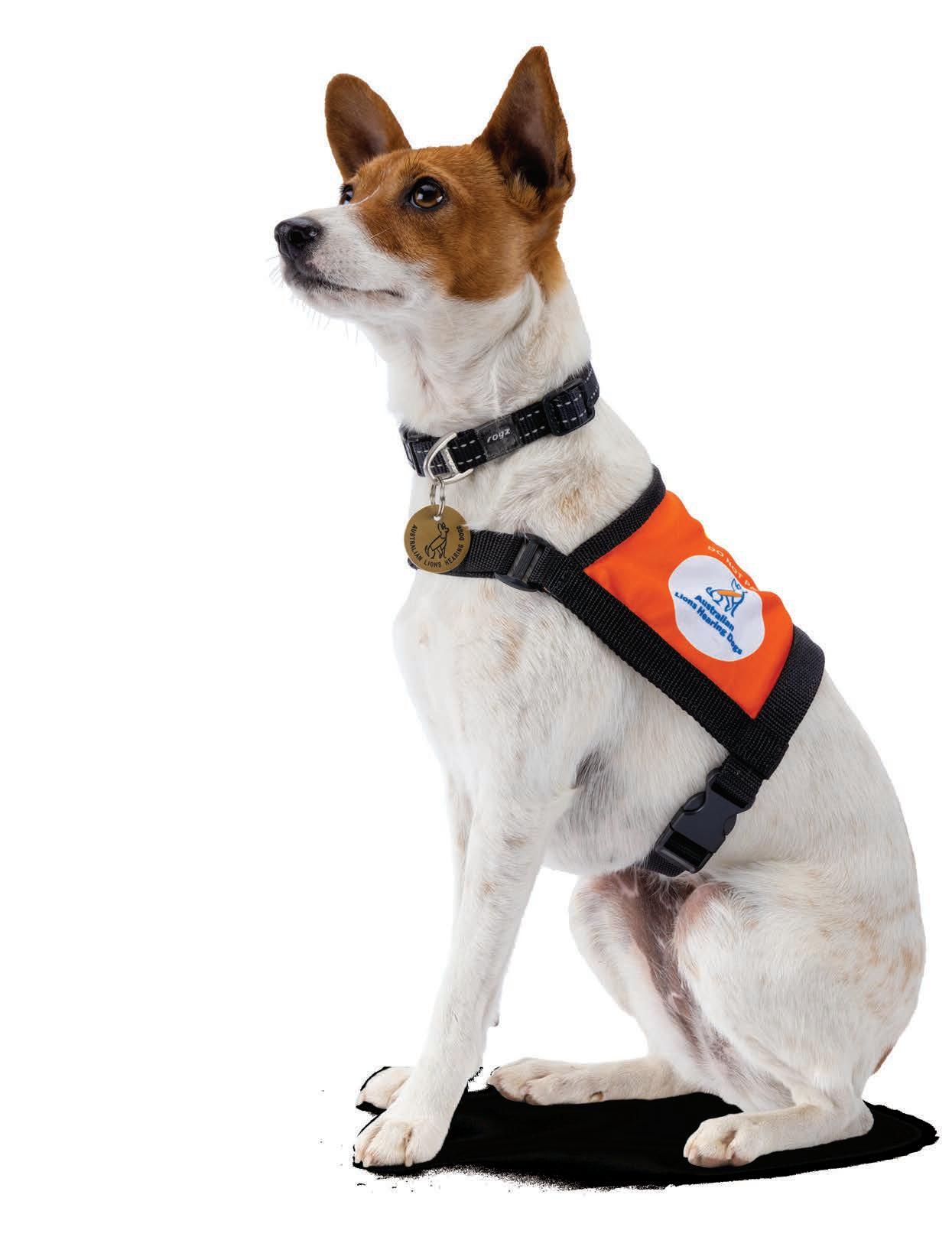

92 AusBiz.
CHARITY
Matilda Meikle
READ IT ONLINE

YOUTH UP FRONT
Youth Up Front is a charity inspiring young people to build resilience and overcome adversity. Over the past 20 years, it has supported more than 100,000 students through educational and outreach programs, mentoring and
learning in some way, typically due to issues such as stress and mental illness, the Skills for Life program can reignite a passion for development and keep young people looking towards the future.
Similarly, Youth Up Front’s employment and career programs help young people to develop a strong resume through work placement opportunities and professional insights from local businesses which can help inform future career decisions.
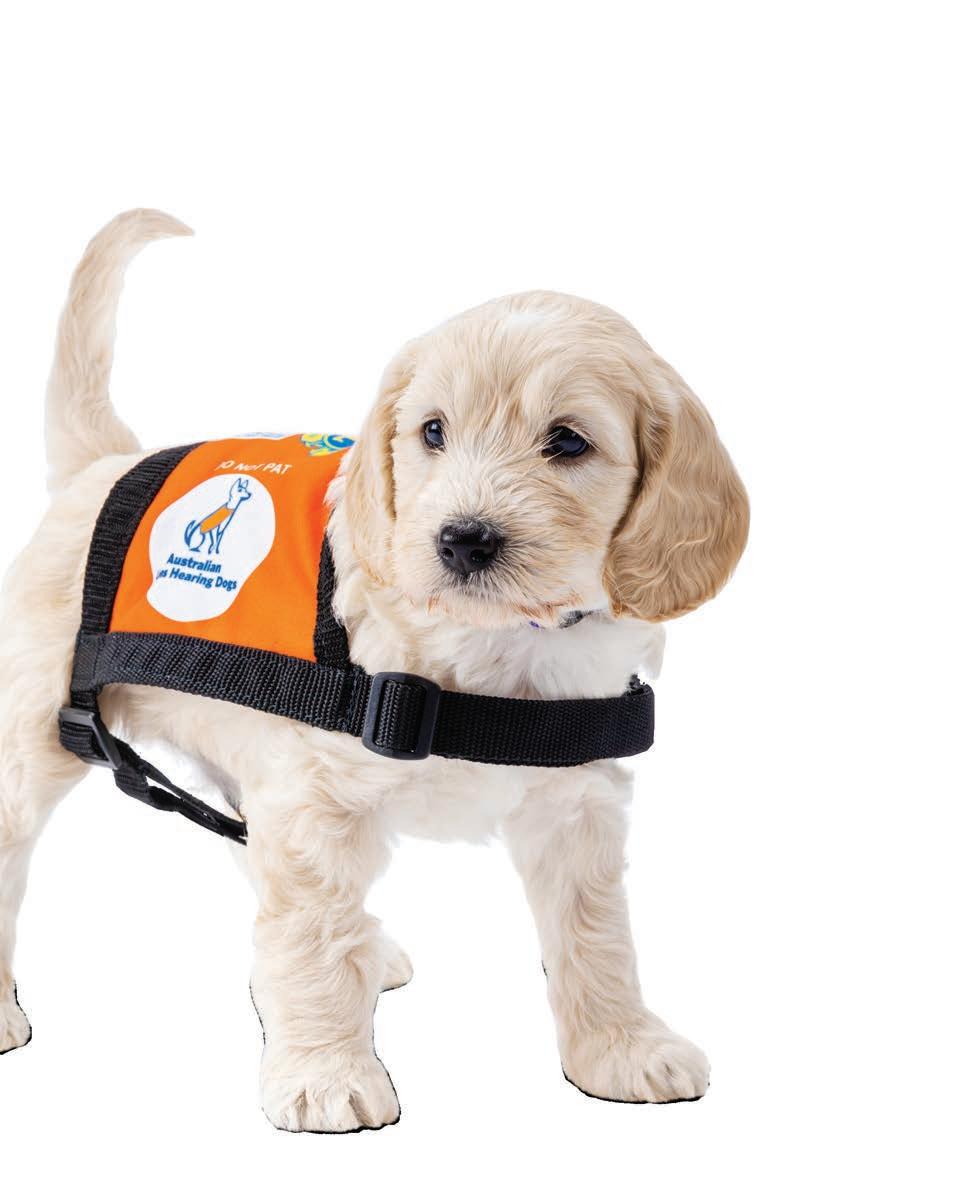
Youth Up Front is always hosting new events to engage with the community and spread its message.
AUSTRALIAN LIONS HEARING DOGS
Australian Lions Hearing Dogs (ALHD) has been providing deaf and hearing-impaired Australians with free professionally trained Hearing Assistance Dogs for more than 40 years. Each dog is typically trained for 6-8 months before being placed in a new home. ALHD place a dog every two weeks, delivering more than 650 dogs since its inception.
Currently, one in six Australians are experiencing some form of hearing loss. Hearing dogs can improve day-to-day living, as well as providing comfort and emotional support. Having a hearing dog creates opportunities for social and community interaction, as well as increasing safety and promoting strong physical and mental health.
ALHD also places medical alert dogs with people living with chronic illnesses. They are primarily focused on supporting those with diabetes, training the dogs to alert their owner when blood glucose levels are outside the target range by touching them with one paw.
JUNE/JULY 2024 93 CHARITY
DONATE HERE DONATE HERE


There are many ways to support the charity, including fostering a puppy until it is old enough to begin full-time training, or donating directly to the foundation.
LITTLE BIG FOUNDATION
Little BIG Foundation seeks to combat loneliness in Australia by creating opportunities for social interaction. The charity acknowledges the detrimental effects
THIS PAGE: STUDENT ENGAGEMENT PROGRAM. IMAGE: YOUTH UP FRONT; COMMUNITY ACTIVITIES TO COMBAT LONELINESS. IMAGES: LITTLE BIG FOUNDATION.
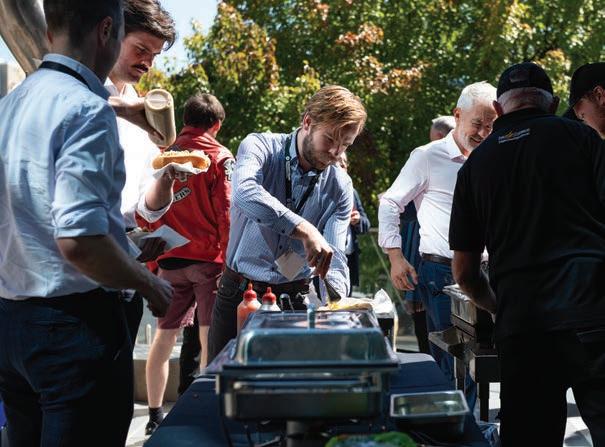
individuals and support their own wellbeing. Since starting the initiative, the residential project has found that 73 per cent of people who attend events form a new relationship, and 44 per cent of people interact more with their community since engaging with the initiative.
of loneliness, especially in a postCOVID age or when living in a big city, and strives to create opportunities to engage with neighbours and colleagues to facilitate connection.
Summer Hill House is the first residential community site, launched in 2021. This safe space invites members of the community to make use of the kitchenette, bathrooms, open living spaces and library. Whether bringing work, playing board games or simply chatting, the house enables residents to find like-minded
Similarly, the Good Work Program is the foundation’s office initiative, improving mental health outcomes by providing a space for workers to interact and unwind over a meal and a chat. Little BIG Foundation also puts on events such as mental health workshops and training classes. In fact, its volunteers run over 2,000 events every year.
Loneliness is linked to an increased risk of heart disease, anxiety and depression, but Little BIG Foundation believes it is simple to prevent disconnection by offering opportunities for meaningful interaction wherever you find yourself.
For more information on the incredible work of these three charities, head to their websites or scan the links on this page.
94 AusBiz. CHARITY
DONATE HERE


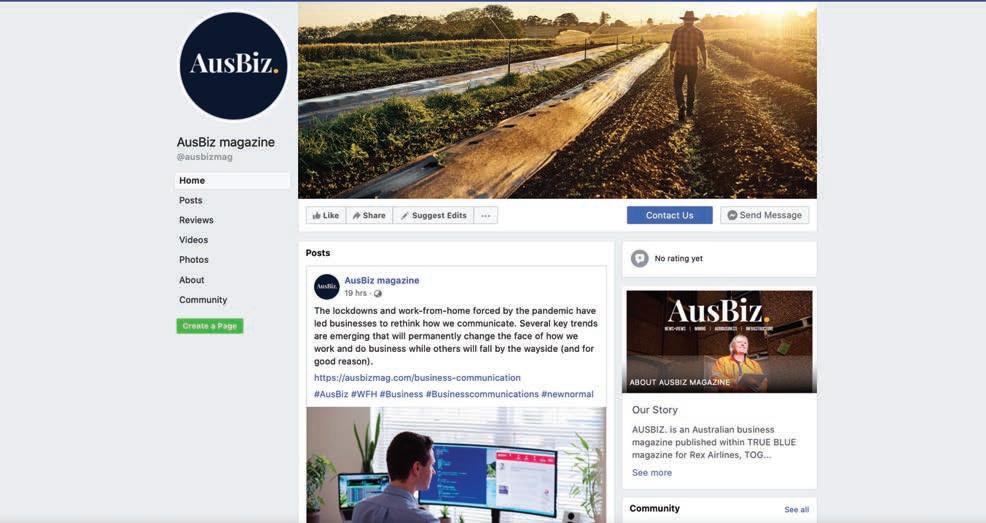

ausbizmedia AUSBIZMEDIA

@AUSBIZMEDIA
ausbizmedia
@ausbizmedia /AUSBIZMEDIA
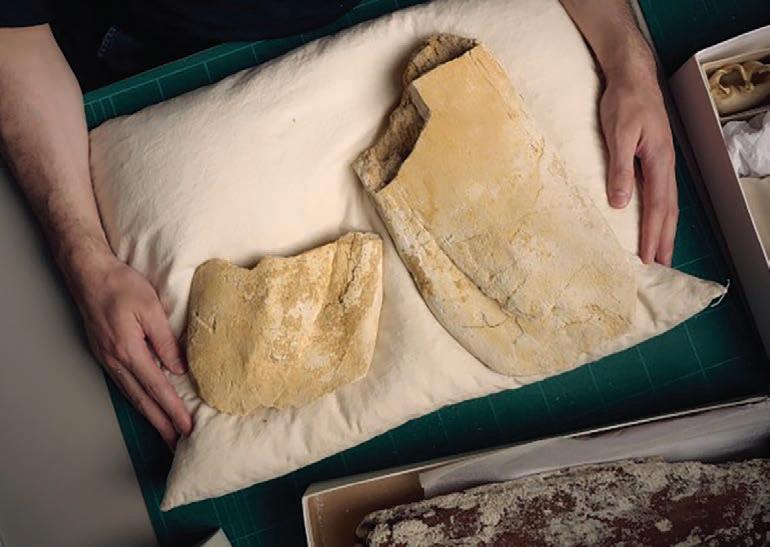
A FIN-TASTIC DISCOVERY
A fragmented jawbone found in the Murray River has changed scientists’ understanding of whale evolution.
Words: Matilda Meikle
The whale fossil was discovered on the banks of the Murray River in 1921, and remained in the collections of Museums Victoria for more than a century. However, a recent study of the fossil has revealed that ancient whale species from the southern hemisphere were much bigger than previously imagined, measuring up to nine metres long. The location of the fossil also indicates that the giant baleen originated in the southern hemisphere, a surprise to many researchers.
Dr James Rule, a researcher at the Natural History Museum in the United Kingdom and lead author of the study, emphasises the importance of these findings on common understandings of whale evolution.
“Though nine metres isn’t large for a whale today, this would have been around 1.5 times as big as the other baleen whales we knew were living at the time,” he explains.
“This fossil reveals that whales in the southern hemisphere were getting larger earlier than expected,
upending studies based mostly on fossils from north of the equator.”
WHAT ARE BALEEN WHALES?
Baleen whales are the largest animals ever identified. Using bristly baleen plates, instead of teeth, the whales collect krill, plankton and small fish from the sea. Baleen is made out of keratin, the same protein that makes human fingernails and hair.
Previous studies of the baleen whale (mysticete) focused primarily on when the marine animals began to grow, rather than where. This is partly because specimens from the southern hemisphere account for only 19 per
cent of all global mysticete fossil records. However, these fossils appear to be much larger than specimens from the north, meaning any marine mammal fossils from the southern hemisphere are invaluable to researchers hoping to understand the evolution of whales.
WHAT DOES THE FOSSIL TELL US?
The jawbone fossil that has sparked such interest was found more than 100 kilometres inland. Even 19 million years ago when the baleen whale was alive, it would have been a long way from open water, suggesting it may have ended up stranded by accident.
Co-author of the paper, Dr Erich Fitzgerald from Museums Victoria, was unaware of the importance of the fossil until he gave it to Dr Rule for study during his undergraduate degree. Together, they realised that the jawbone belonged to the largest baleen whale to ever exist.
When compared with baleen whale specimens over time, it became clear that while whales from the north have grown over the past 5 million years, those in the south were getting larger much earlier.
“The southern hemisphere and Australia in particular, have always been overlooked as frontiers for fossil whale discovery,” says Dr Fitzgerald.
“Fossil whale finds, like the specimen from the Murray River, are shaking up the evolution of whales into a more accurate, truly global picture of what was going on in the oceans long ago.”
The original paper was published in Proceedings of the Royal Society B journal.
“Fossil whale finds, like the specimen from the Murray River, are shaking up the evolution of whales into a more accurate, truly global picture of what was going on in the oceans long ago.”
96 AusBiz. LAST WORD
THIS PAGE: JAW FRAGMENTS. IMAGE: EUGENE HYLAND/ MUSEUMS VICTORIA.
READ IT ONLINE


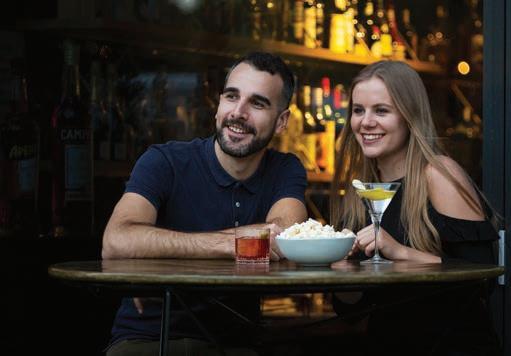

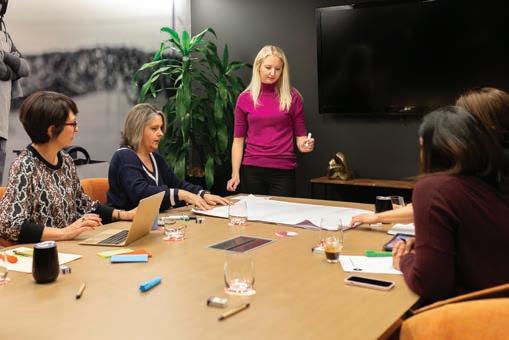
02 6295 6925 easthotel.com.au 69 Canberra Ave Kingston ACT 2604 It’s time to head... differently Do Canberra





































































